
Embarking on the path of creating a new business is known to be one of the most daunting tasks that a person can start.
Being torn between the different processes of organizing, planning, handling finances and managing employees; it is extremely easy for matters to get out of hand and driving a genius multitasker mad.
Because of this fact, a person will always try to find solace from whatever source that comes along the hardships of this path.
With the presence of numerous tools and apps that are made to be compatible with all kinds of services that can be needed; it would be the ultimate waste of resources if you as an entrepreneur don’t utilize these services in a way that will help you develop your company without facing relentless hassles that can be resolved with much less effort.
However, it is important to note that because these services are abundant and wide in their reach, this creates the problem of choice, which in its turn will be extremely time consuming.
That’s why I’ve narrowed down a few tools that can be extremely beneficial to any small business, whether you’re just starting out or have years of experience. So let’s take a look at them!
CHAT AND COLLABORATION: SLACK
Communication is essential in all aspects of life, and it is especially important in business. Keeping everyone informed and on the same page is critical to keeping things going smoothly and preventing easily avoidable miscommunication issues.
This is the reason why any company is always in dire need of an app through which all involved parties can easily communicate with each other.
While Skype or WhatsApp are wonderful for one-on-one communications, if your team has more than a few members, you might consider using Slack.
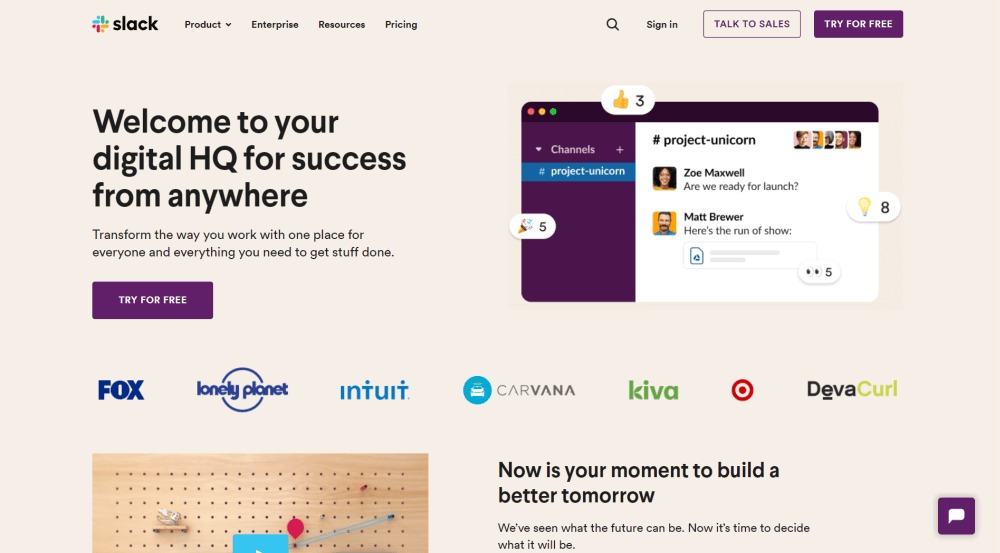
Individual and group chatting are available in Slack, making collaboration between teams much easier. You can, for example, create a distinct group for your design team or web developers, as well as video calls (just one on one with the free plan, and up to 15 teammates with the Pro plan).
But it’s Slack’s integrations with over 2,400 other apps that really sets it apart from other apps. Slack is compatible in its utility with other apps and services like Google Calendar, Zoom, or a project management programs like Asana and Trello directly from Slack. This saves the users time by not having to collect the information from every app separately. Which is helps you save time and be more productive. For example, all team members will be getting a notification for an Asana or Google appointment automatically on your Slack interface.
Pricing: Slack offers a free plan and paid plans starting from $6.67 USD/user/month.
A few Slack disadvantages:
- You only have access to 10,000 of your team’s most recent messages. For a team of 20 people, that equals about a month’s worth of chat history based on our own tests.
- The free plan allows only 10 integrations with other apps, but this might actually be enough depending on your team’s needs.
- The free plan only allows one-on-one voice and video calls, but if you integrate Zoom into Slack you’ve got that covered.
- People complain the app doesn’t work as well on Android, with some not being able to log in or receive notifications.
VIDEO CONFERENCING: GOOGLE MEET
Video conferencing has become a necessity for online meetings and even events in a world where many people freelance or work remotely. Small businesses are increasingly being pushed to connect with team members, providers, business allies, and customers via the internet.
Consider Google Meet if you require a video conferencing service for your company. While Zoom has grown in popularity over the last year and is excellent for video conferencing, Google Meet may be a better option for a small business, especially if you choose the free option.
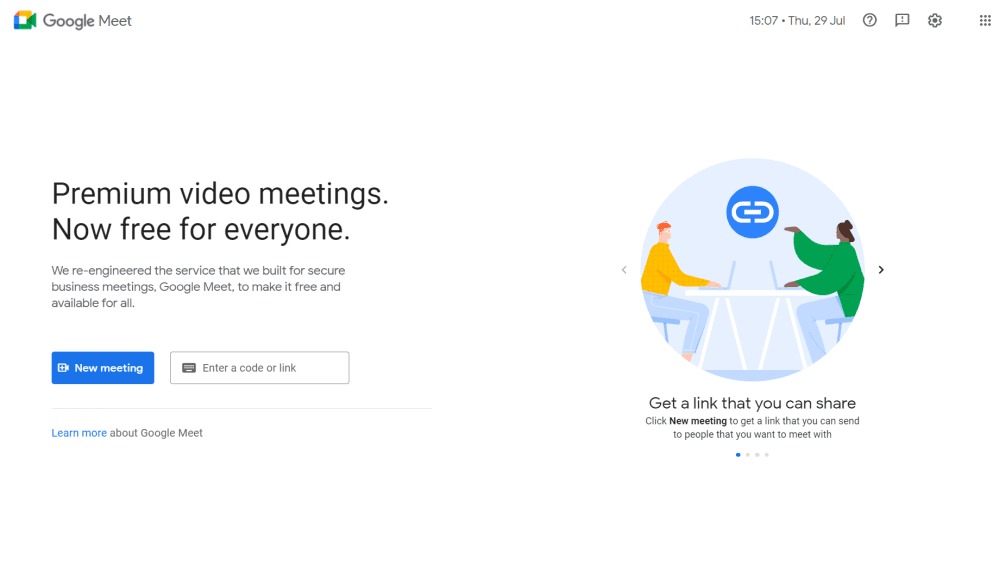
In contrast to Zoom’s free plan, which has a 40-minute video call limit, Google Meet’s free plan includes a 60-minute meeting limit. If your meetings tend to drag on and you’re deciding between the two free options, these 20 minutes could make for a reliable difference.
Google Meet also integrates with other Google services, and you don’t need to download an app to use it; simply sign in with your Google account.
A call can have up to 100 participants on both Google Meet and Zoom’s free plans.
Pricing: The free plan might be more than good enough for your needs, but if you’d like more features like 24-hour meetings, 300 users with 30 GB cloud storage each, as well as custom and secure business emails, you can go for the Business Starter plan at $6 USD/user/month.
PROJECT MANAGEMENT: ASANA
Staying organized and on top of things is a daily battle that you are expected to win with each new working day, as any small business owner will tell you. And doing so with just a calendar or to-do list, or even worse, trying to keep everything organized in your thoughts, is nearly impossible.
To keep organized as a business owner, you’ll need something more complex like a project management programme, especially if (some of) your workers work remotely, and Asana is the best option for small enterprises.
Asana organizes everything into projects, lists, and boards, providing nearly endless ways to organize based on a company’s specific needs. Here are a few examples of what you can do with Asana:
- Organizing to-do lists and planning your week/month
- Keeping track of tasks with an overview on projects and resources
- Team collaboration
- Organizing and sharing files with collaborators by linking Google Docs to a project
- CRM – you don’t need a complicated and separate contact management or customer relationship management software as a small business, Asana’s Projects are enough to stay on top of your business relationships.
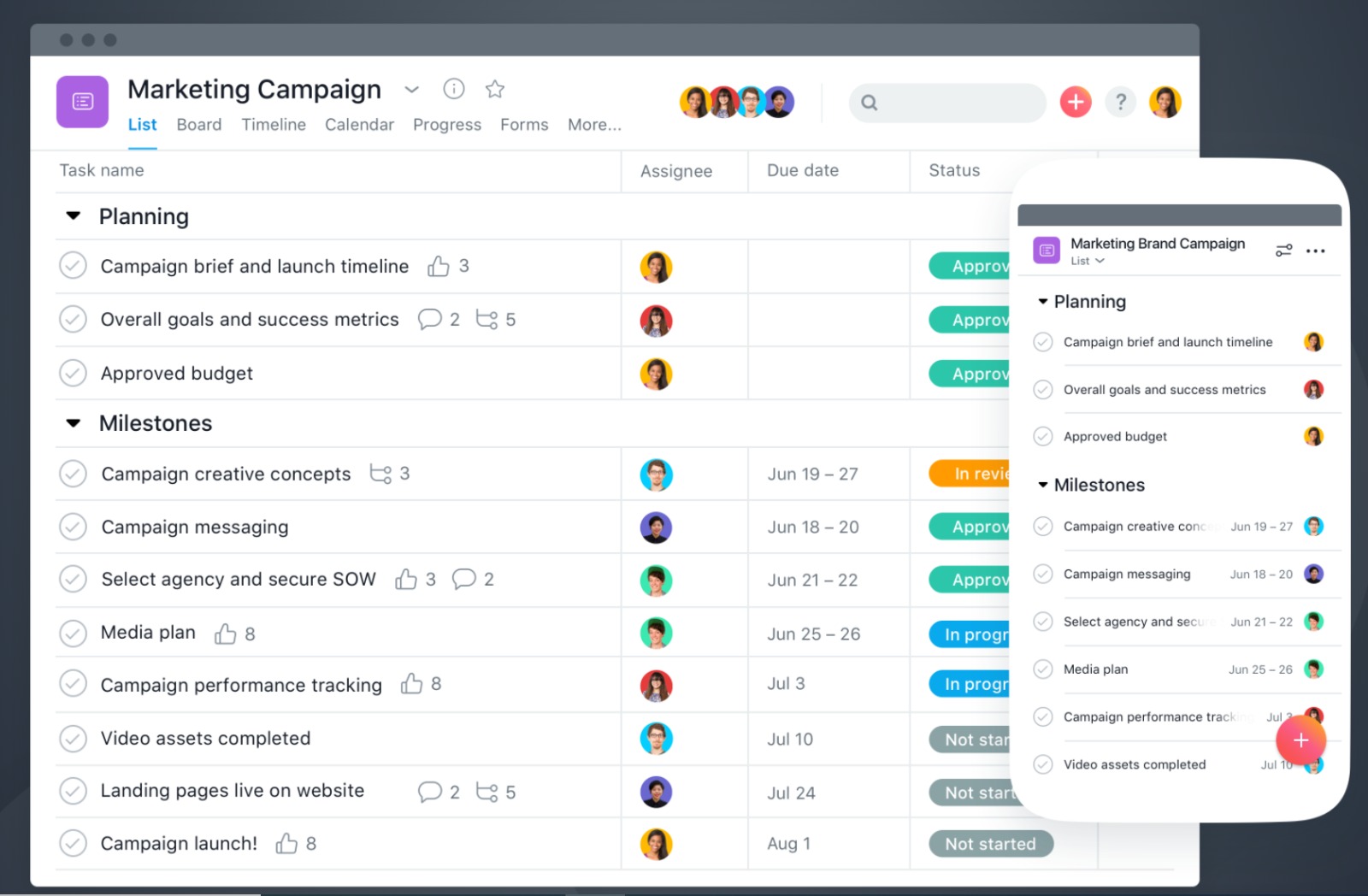
Pricing: Asana’s Basic plan allows all projects, tasks, activity log, storage, comments and a team of up to 15 users. It also has basic reporting: status updates in Asana and export projects PDF or CSV. You can create as many tasks and projects under the team as you want.
Asana’s free basic plan might be everything you’ll ever need for your team, with unlimited projects and tasks, but if you have a team of more than 15, you may want to go for the Premium plan at $10.99 USD/user/month billed annually OR $13.49USD/user/month billed monthly.
If you find a project management tool too complicated, you can try something easier like Evernote or a more straightforward alternative like Paymo, which also offers other useful modules like invoicing.
BRANDING AND DESIGN: CANVA
Small businesses may have limited marketing budgets, and every dollar matters. Canva offers a completely free account with a variety of handy features. Hundreds of templates, stock pictures, icons, and other elements are immediately available to you.
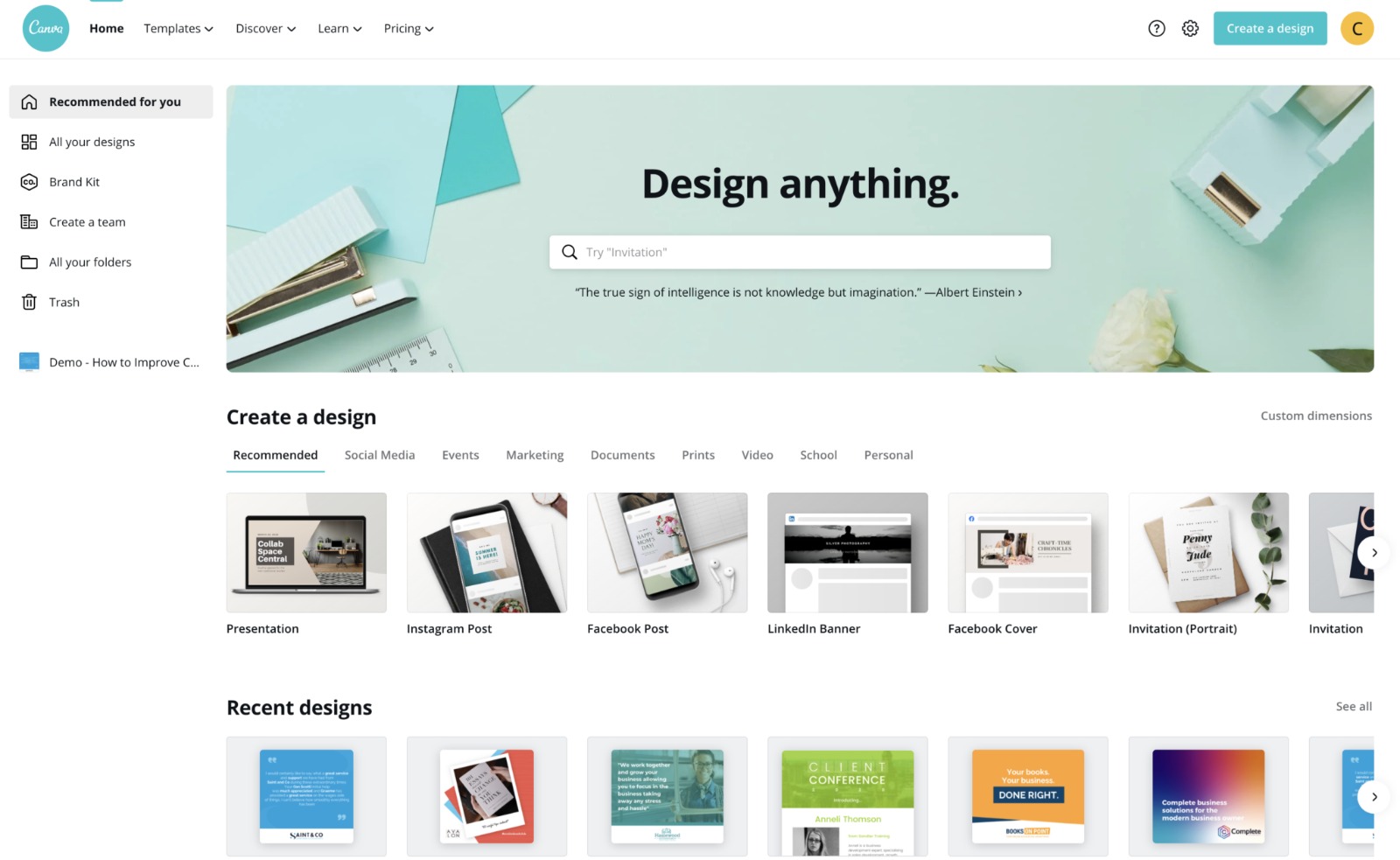
Canva Free Plan Includes:
- 250,000+ Templates – Access to over 250,000 templates but there will be some templates with premium graphic elements, photos, or videos with a Canva watermark on them.
- 200K Photos – Access to 200K photos for free and the premium ones starting at $1 each if you’re not the Pro plan user.
- 57K Graphic Elements & 13K Videos – You’ll have access to 57K graphic elements and 13K videos that you can use in your designs for free.
- 1700 Fonts – The free plan allows you to choose from 1700 free fonts for your designs but you can’t upload your own fonts.
- 75 Audio Tracks & 6 Animation Effects – You’ll have access to 75 audio tracks and 6 animation effects.
- Invite Your Team – Invite team members for free through email and give them access to work on your designs together.
- 5GB Storage – You’ll have 5GB of storage for uploading your assets.
- Two Folders – Create and use two folders for free to organize your designs within your Canva account.
- Brand Kit (Limited) – You will have access to one color palette in your brand kit with three different colors. However, you can’t upload your own logos or fonts.
Pricing: Canva offers plenty of free design templates and resources, but if that’s not enough, there’s Canva Pro for $12.99 USD/month.
WEBSITE PERFORMANCE: GOOGLE ANALYTICS
You may not have heard of Google Analytics if you’re new to the industry. For any internet business, the tool is widely regarded as one of the most vital software to be used.
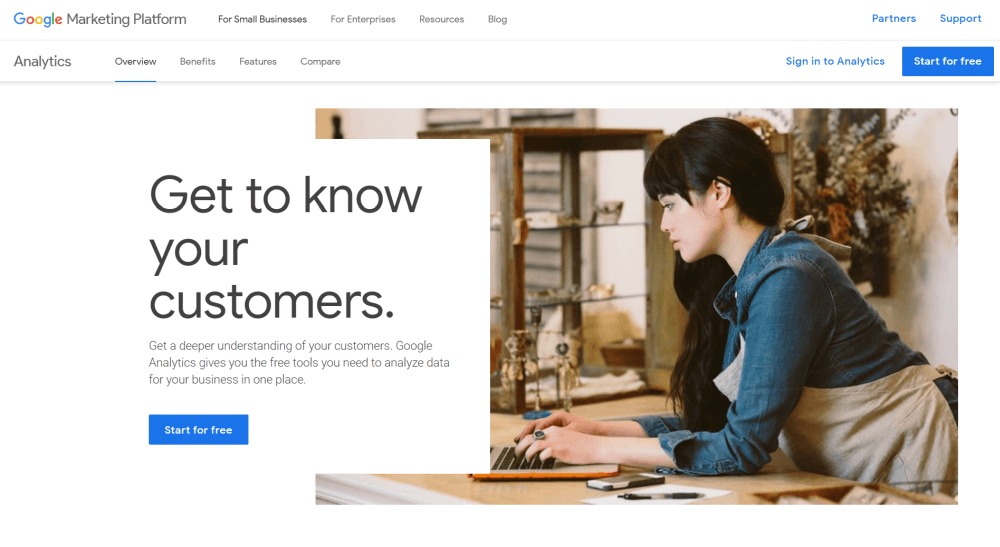
It’s critical to make sure your website runs smoothly and that you have access to vital information about your website’s traffic. With the most recent release, there is also a strong focus on statistics for mobile apps.
You can use Google Analytics to improve your website’s content and user experience, as well as track sales, leads, and anything else that is regarded a business’s end goal.
There are other analytics tools available, but this one is free — small businesses may use it without paying a monthly fee — and it is utilized by more than half of all websites, according to this survey.
Here are a few of the most important metrics you should be tracking no matter what industry you’re in:
- How many visitors come to your website (new or returning)
- What types of devices they are using
- Where you get the traffic from
- How much time visitors spend on the most important pages
- How many pages they look at in a session
Being aware of these metrics will lead to better long-term strategic decisions, and can also help in identifying possible problems that can limit the growth of your business.
Pricing: Free for small businesses.




